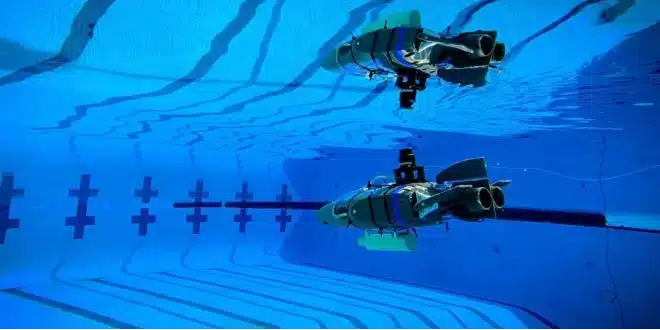NASA has unveiled advanced robots designed to explore the underwater worlds of Jupiter’s moon Europa and Saturn’s moon Enceladus. Developed by the Jet Propulsion Laboratory (JPL), the concept is called Sensing With Independent Micro-swimmers (SWIM). These innovative robots could revolutionize the study of the subsurface oceans on these icy moons.
Currently being tested in a pool, each robot weighs over two kilograms and measures about 16.5 inches. NASA’s plan involves deploying several of these small, self-propelled robots, which are significantly smaller than existing autonomous underwater vehicles, to detect temperature and chemical signals indicative of life.
Equipped with communication and GPS systems for underwater navigation, these robots also carry instruments to analyze the chemical composition of the oceans. A video released by JPL from the prototype tests demonstrated the feasibility of the concept, which still requires funding and approval for further development.
Exploration of Jupiter’s moons has fascinated scientists due to hints of hidden oceans on moons like Europa, Enceladus, Titan, and Ariel, which may harbor conditions suitable for life. Motivated by these possibilities, NASA and the European Space Agency (ESA) have launched missions to Jupiter’s moons this year.
In April, ESA’s Jupiter Icy Moons Explorer (JUICE) spacecraft was launched to study Europa, Callisto, and Ganymede. This mission will be followed by NASA’s Europa Clipper probe, set to closely examine Europa. Both missions are expected to begin their primary scientific operations in the early 2030s upon arrival at their respective destinations.
NASA is also planning another mission to explore Saturn’s moon Titan, believed to have a subsurface ocean. The Dragonfly mission will utilize a drone to fly over Titan, searching for traces of prebiotic conditions that could have led to the emergence of life in our solar system.


